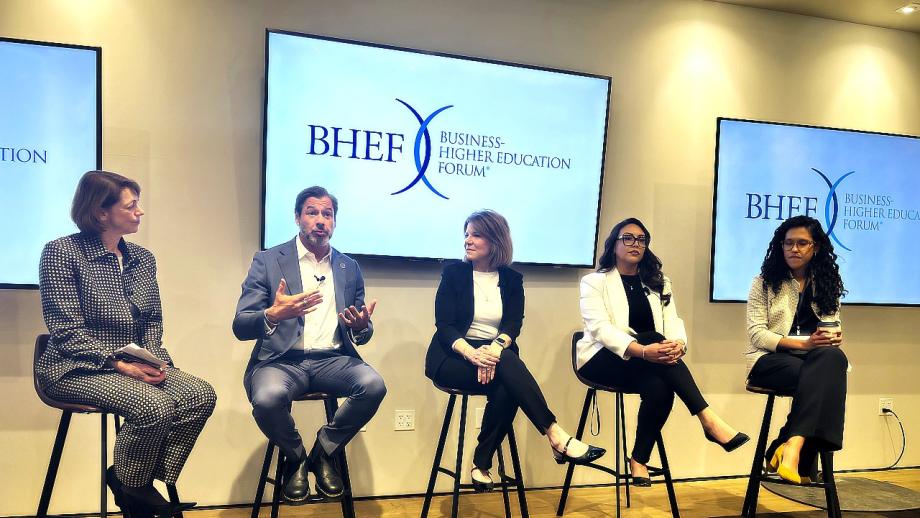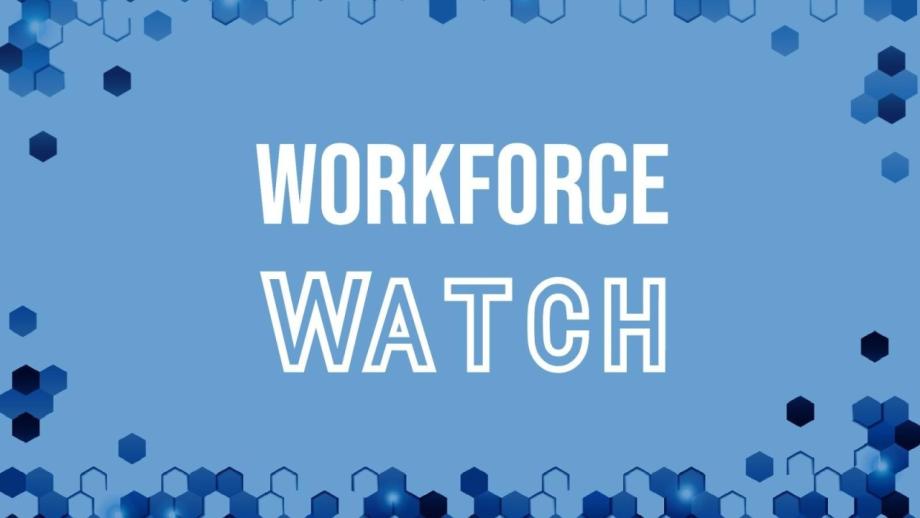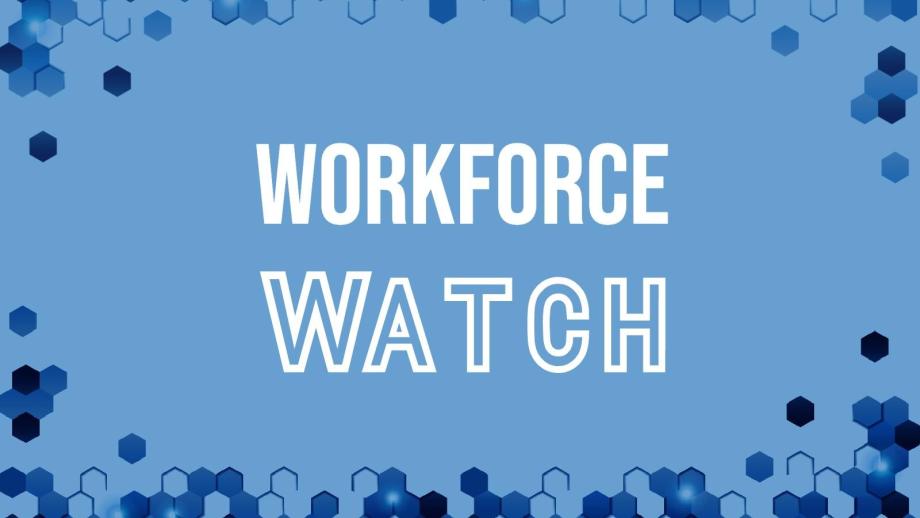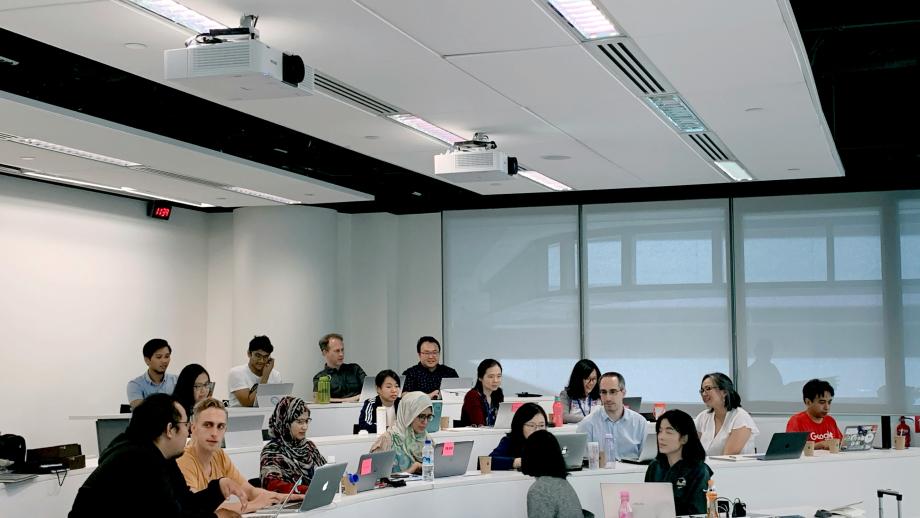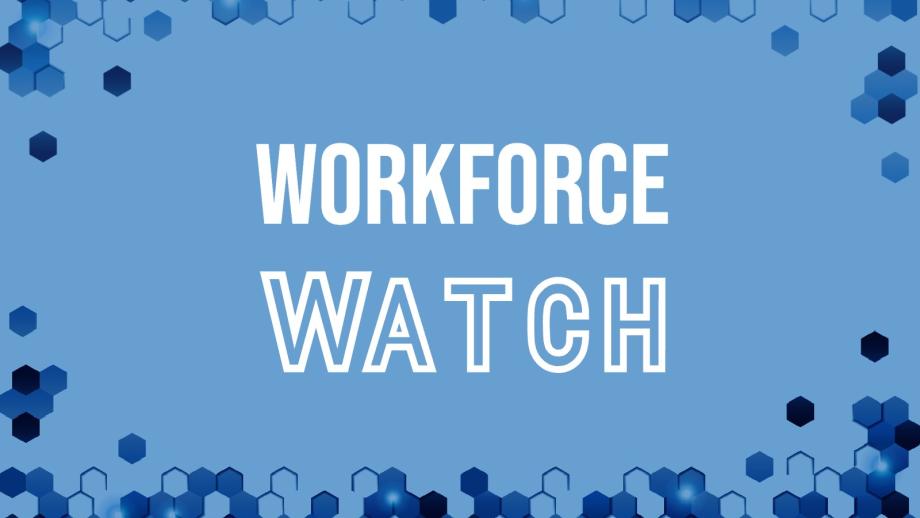Artificial Intelligence (AI) isn’t a distant challenge—it’s rapidly reshaping industries and the workforce right now. The current rate of American economic growth requires the full activation and participation of all talent to meet labor needs—in AI and other in-demand fields. That’s why businesses and higher education institutions must act now.
Through the Business-Higher Education Forum’s unique network of corporate and academic leaders, we are mobilizing high-impact, cross-sector collaborations to ensure talent development keeps pace with AI-driven change and workforce transformation. We are proud to announce that in 2025, BHEF will launch three new initiatives to connect the expertise of the world’s leading technology and labor experts with the critical challenges shaping the future of work:
- AI and the Future of Talent Collaborative – Ensuring the population of today and tomorrow is a workforce ready to thrive in an AI-driven economy.
- Work-Integrated Learning Innovation Center – Expanding and scaling experiential learning models that align education with evolving workforce needs.
- Regional Talent Competitiveness Accelerator – Advancing regional and national strategies to strengthen U.S. talent pipelines and global workforce competitiveness.
These initiatives will equip business and higher education leaders with actionable solutions to navigate the future of work and drive inclusive economic growth.
AI and the Future of Talent Collaborative
Nearly a third of workers will be impacted by AI in their jobs, with an estimated 50 percent of tasks being augmented by AI technology. However, the impacts won’t be distributed evenly nor will they occur at the same pace. Certain sectors, like finance, will experience higher disruptions, while occupations across sectors, demographics, and educational attainment levels will face varying degrees of AI exposure and skill demands. Business and higher education must develop a clear understanding of what those implications are and action plans for how to address them.
That’s why later this month, BHEF will launch its AI and the Future of Talent Collaborative. Leveraging the expertise of our business and higher education members, this initiative will focus on three key areas in 2025:
- Define the Disruption: Use data-driven strategies to identify and analyze AI’s sector-specific impacts across the U.S. economy, from finance and defense to energy and manufacturing.
- Translate the Impacts: Translate sector data into real-world insights regarding how AI affects learners and workers, providing insights and tools to ensure training and credential pathways align with evolving workforce needs.
- Lead the AI Skills Revolution: Establish one of the first national AI skills frameworks to accelerate large-scale changes in corporate learning and development and higher education.
While AI’s rapid integration presents a scale of change across nearly every job type and sector, business and higher education are ready to meet the challenge. By strengthening our network’s AI expertise and leadership, we can develop workforce strategies rooted in proven best practices and drive meaningful change.
Work-Integrated Learning Innovation Center
Technology disruptions and socioeconomic dynamics make work-based learning (WBL) more essential than ever. BHEF’s innovative members are already implementing models that blend classroom learning with real-world experience. Furthermore, recent research from BHEF highlights a strong demand for WBL: employers are eager for talent with hands-on experience, from internships to apprenticeships, while academic leaders are committed to expanding these opportunities for students. Later this year, BHEF will launch this new innovation center where we will focus on sharing and scaling best practices and effective models, expanding access to WBL opportunities, and helping businesses integrate relevant digital, business, and human skills into diverse work-integrated learning experiences.
Regional Talent Competitiveness Accelerator
AI’s impacts will not only vary by sector and occupation but are already creating significant regional differences. As AI continues to disperse across jobs and industries, regional leaders must swiftly adapt to harness AI’s potential for driving economic growth. Past automation changes in the labor force have led to significant increases in unemployment. However, they’ve also led to new opportunities for regional economic growth and major shifts in economic hubs. The impacts of AI on the San Diego biotech sector will look different from its impacts on the Norfolk, VA, defense manufacturing sector. Additionally, the recently deployed Good Jobs Challenge, NSF Regional Engines, Tech Hubs, and similar programs depend on the critical role of business and higher education leaders to maximize their growth and success. That’s why BHEF is equipping business and higher education partnerships with tools, frameworks, methodologies, case studies, and technical assistance to develop talent-driven workforce strategies that meet our country’s high-tech needs based on BHEF’s years of evidence-based practices.
Our national convenings will continue to showcase successful regional models and ecosystem approaches, bringing together leaders who are already building future-proof economies. These efforts will empower regional employers, university presidents, governors, mayors, and local intermediaries to fully capitalize on the AI revolution, leveraging best practices in business-higher education collaboration to ensure U.S. cities remain competitive in the global economy.
The Business-Higher Education Forum network isn’t waiting for the future—they’re shaping it now. By uniting business and higher education, we’re ensuring that today’s workforce is ready for tomorrow’s opportunities.
You can learn more about our initiatives at www.bhef.com/initiatives
